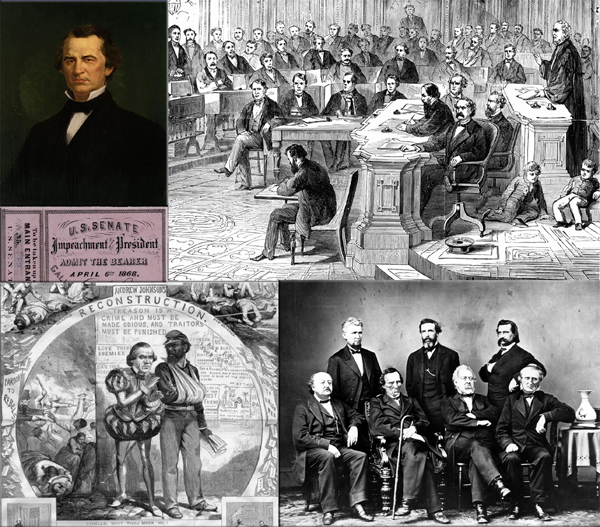
President Andrew Johnson impeached on February 24, 1868
President Andrew Johnson impeached: The U.S. House of Representatives votes 11 articles of impeachment against President Andrew Johnson, nine of which cite Johnson's removal of Secretary of War Edwin M. Stanton, a violation of the Tenure of Office Act. The House vote made President Johnson the first president to be impeached in U.S. history.
At the outbreak of the Civil War in 1861, Andrew Johnson, a senator from Tennessee, was the only U.S. senator from a seceding state who remained loyal to the Union. In 1862, President Abraham Lincoln appointed him military governor of Tennessee, and in 1864 he was elected vice president of the United States. Sworn in as president after Lincoln's assassination in April 1865, President Johnson enacted a lenient Reconstruction policy for the defeated South, including almost total amnesty to ex-Confederates, a program of rapid restoration of U.S.-state status for the seceded states, and the approval of new, local Southern governments, which were able to legislate “Black Codes” that preserved the system of slavery in all but its name.
The Republican-dominated Congress greatly opposed Johnson's Reconstruction program and in March 1867 passed the Tenure of Office Act over the president's veto. The bill prohibited the president from removing officials confirmed by the Senate without senatorial approval and was designed to shield members of Johnson's Cabinet like Secretary of War Edwin M. Stanton who had been a leading Republican radical in the Abraham_Lincoln administration. In the fall of 1867, President Johnson attempted to test the constitutionality of the act by replacing Stanton with General Ulysses S. Grant. However, the U.S. Supreme Court refused to rule on the case, and Grant turned the office back to Stanton after the Senate passed a measure in protest of the dismissal.
On February 21, 1868, Johnson decided to rid himself of Stanton once and for all and appointed General Lorenzo Thomas, an individual far less favorable to the Congress than Grant, as secretary of war. Stanton refused to yield, barricading himself in his office, and the House of Representatives, which had already discussed impeachment after Johnson's first dismissal of Stanton, initiated formal impeachment proceedings against the president. On February 24, Johnson was impeached, and on March 13 his impeachment trial began in the Senate under the direction of U.S. Supreme Court Chief Justice Salmon P. Chase. The trial ended on May 26 with Johnson's opponents narrowly failing to achieve the two-thirds majority necessary to convict him.
History Channel / Wikipedia / National Park Service / Encyclopaedia Britannica / Biography.com / UMKC School of Law
Wikipedia Image: Andrew Johnson (December 29, 1808 – July 31, 1875), 17th President of the United States (1865–1869) (As Vice President of the United States in 1865, he succeeded Abraham Lincoln following his assassination).
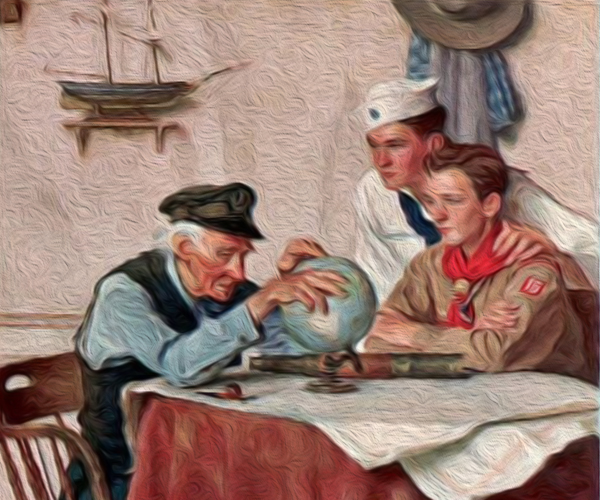
Understanding Military Terminology - functional damage assessment
(DOD) Functional damage assessment:
The cumulative effect of dominance in the air, land, maritime, and space domains and information environment (which includes cyberspace) that permits the conduct of joint operations without effective opposition or prohibitive interference. OCEM.org / Joint Publication 3-0)
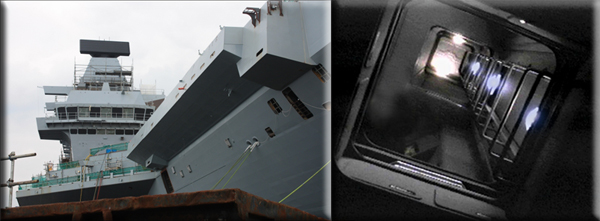
The Old Salt’s Corner
How a Ship is Compartmented and Numbered
Knowing how the carrier is compartmented is crucial for navigating its vast interior. Although ship’s personnel will be happy to lend a hand in getting around, it is still useful to have a working knowledge of where things are located. Each compartment of the ship is stamped with a series of alphanumeric numbers, known as "bull’s-eyes," which give information on where your are, and what that compartment’s function is. The information is given in the following order: deck number, frame number, relation to the centerline of the ship, and compartment usage. Each of these parts is separated by a hyphen.
Decks above the main deck are numbered 01, 02, 03, etc. and are referred to as levels. Below the main deck, there are the first, second, third decks, etc. (remember, on a carrier the hangar deck, the one below the flight deck, is the main deck.). Frame numbers tell you where you are in relation to the bow of the ship; the numbers increase as you go aft. The third number in the bull’s-eye reflects compartmentation numbers in relation to the ship’s centerline. EVEN numbers are to PORT, and ODD numbers are to STARBOARD. The numbers increase as you travel outboard. The last letter stamped on the compartmentation number indicates what the compartment is used for. Below are some typical codes:
Carrier Compartment Usage Codes
A
Supply and storage L
Living quarters
B
Guns M
Ammunition
C
Ship control T
Trunks and passages
E
Machinery V
Void
F
Fuel W
Water
Example: 3-75-4-M
3: Indicates the third deck.
75: Indicates the compartments forward boundary is on or immediately aft of ship’s frame 75.
4: Indicates the fourth compartment outboard of the centerline to port (even numbers to port, odd to starboard).
M: Indicates the compartment is used for ammunition (see above).

“I’m Just Sayin’”
What do you call male ballerinas?

“Thought for the Day”
“Believe in yourself! Have faith in your abilities! Without a humble but reasonable confidence in your own powers you cannot be successful or happy.”
~ Norman Vincent Peale

“What I Have Learned”
“Children seldom misquote you. In fact, they usually repeat word for word what you shouldn't have said.”
~ Anonymous

Bizarre News (we couldn’t make up stuff this good – real news story)

A generous resident (name withheld by KDKA-TV) of South Oakland, Pa., in seasonal spirit the week before Christmas, invited a pregnant, homeless woman she had met at a Rite-Aid store home with her for a hot shower, a change of clothes, and a warm bed for the night.
The resident was forced to call police, though, when she went to check up on her guest and discovered her engaging in sexual activity with the resident’s pit bull. The guest, enraged at being caught, vandalized the home before officers arrived to arrest her. CBS Pittsburgh / PMP Cure.org
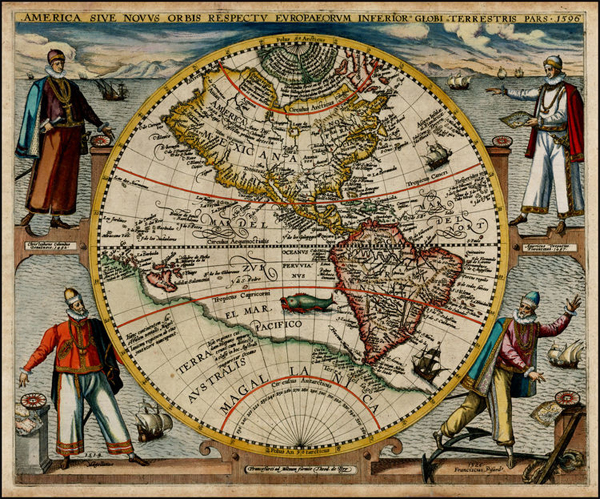
Mr. Answer Man Please Tell Us: How Did Our Country Come To Be Called America?
Since Christopher Columbus was the most publicized of the several candidates believed to have discovered the New World, it would seem logical for the land to be called Columbiana. Instead, because of an error made by a mapmaker, and because Columbus refused to believe he had found an unknown continent, the New World was named America.
Columbus refused to take credit for discovery of a new continent. To the day of his death, in 1506, he persisted in the belief that he had landed on an unexplored eastern part of Asia. Meanwhile, Amerigo Vespucci - he later took the Latin name Americus Vespucius - a Florentine merchant and astronomer turned adventurer and navigator, made 4 voyages to the western hemisphere, the 1st a private Spanish expedition in 1497, the others in 1499, 1500, and 1503. Vespucci's voyages were to the land now designated as South America, and he was the 1st to perceive that this was a land unknown to Europeans and he therefore suggested it be called Mundus Novus - New World.
Vespucci never once suggested the New World be named for him. That came about through an unusual chain of circumstances. While abroad, Vespucci wrote numerous letters about what he saw to friends. Apparently, an unsavory author got hold of some of these letters, rewrote and sensationalized them, and published them as Four Voyages, attributing them to Vespucci. The published letters have since been proved to be forgeries. However, 2 authentic letters written by Vespucci--one to his patron, the notorious Italian nobleman Lorenzo de' Medici, the other to an old schoolmate, Piero Sodorini--were located by scholars in Florence during the 1700s.
But it was one of the counterfeit letters that inspired the baptizing of the New World. This letter was published by the Academy of the Vosges in Lorraine during April, 1507. It was read by a young German cartographer, Professor Martin Waldseemuller, who was working at the academy with 4 other scholars, preparing an updated version of Ptolemy's Geography. Waldseemuller, impressed by the so-called Vespucci letter describing the New World, included it in his book, Cosmographiae introductio. In his Latin text, Waldseemuller also wrote the following: “But now, since these parts have been more extensively explored, and another 4th part has been discovered by Americus Vespucius (as will appear from what follows); I see no reason why it should not be called Amerigo, after Americus, the discoverer, or indeed America, since both Europe and Asia have a feminine form of name from the names of women.” The map of the New World was published separately, and what is now Brazil was then boldly named “America”.
In later writings and maps, more aware of the role Columbus played, Waldseemuller dropped “America” and renamed it “the Land Unknown”, crediting Columbus with its discovery. By then his book had gone into many editions. His 1st suggestion that the new land be named after Amerigo or Americus had caught on, and soon Mercator had made it official by calling the entire western hemisphere “America”. But Vespucci had died in Seville in 1512, at the age of 61, unaware of his accidental immortality.
In the years since, Vespucci has been accused of fraud and of usurping credit from Columbus. In fact, essayist Ralph Waldo Emerson wrote: “Strange that broad America must wear the name of a thief! Amerigo Vespucci, the pickle-dealer at Seville, who went out in 1499, a subaltern with Hojeda, and whose highest naval rank was boatswain's mate, in an expedition that never sailed, managed in this lying world to supplant Columbus, and baptize half the earth with his own dishonest name."
But Vespucci did sail on his 1499 expedition, made no effort to give half the earth his name, and had nothing but praise and friendship for Columbus, who in turn considered him “a very worthy man”.
© 1975 - 1981 by David Wallechinsky & Irving Wallace
Research: Wikipedia
• Britannica
• UHMC.org
• Boston Globe
Image: Norman Rockwell Coin Toss - October 21, 1950 / Norman Rockwell Prints on Decision Making

Where Did That Saying Come From?

“Play both ends against the middle:”
To “play both ends against the middle” means to maneuver two opponents into a conflict against each other in order to benefit yourself, or to pretend to favor both opponents as a way of being sure of ending up on the winning side. This behavior will seem very familiar to any student of politics, where a candidate’s pledge of fealty to opposing (and often mutually exclusive) sides of a debate is regarded as “realistic” and “post-partisan.” It’s also the principle behind the not-uncommon practice of a party surreptitiously supporting an extremist candidate on the other side in order to draw votes away from a more mainstream opponent.
The Idiom actually comes from the card game called “faro”, which was an extremely popular form of gambling in 19th century America. (The name “faro” is a simplified form of “Pharaoh”, a king of ancient Egypt. It’s thought that the decks of cards used in 17th century France, where the game first appeared, were decorated with a picture of a Pharaoh.)
Unfortunately, faro games can be, and often were, rigged by shaving the edges of cards to make their location in the deck easily identifiable to crooked dealers and players. Apparently the ends of cards were frequently shaved in a concave or convex fashion, and this technique was called “both ends against the middle”, which became “playing both ends against the middle”. Word Detective

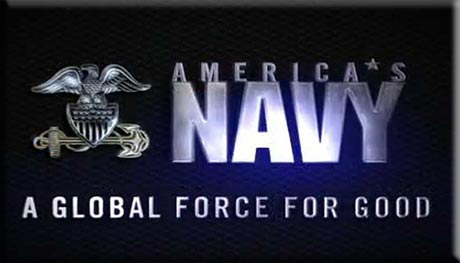
NAVSPEAK aka U.S. Navy Slang
Boopdiddley: All-inclusive word usually pertaining to something ridiculous.
Glasses: Binoculars
JOPA: Junior Officer Protection Association. An ad-hoc organization of young division officers onboard some surface ships and in most aviation squadrons, assembled to provide a means of guidance and escape from overly-demanding Department Heads. When JOPA is unified it can control some wardroom social functions, but little else. A logo has been seen depicting a combination of a Commander and Lt. Commander's metal insignia crossed out.
Tits Machine: Old-school term for a kick-ass aircraft, usually a fighter, that consisted of little more than an airframe, minimal avionics, and a huge engine or two. The F-8 Crusader was universally accepted as a tits machine. The F-14 Tomcat was also widely accepted. Today's modern electronic video game fighters like the F/A-18 Hornet will never be in the same ballpark.
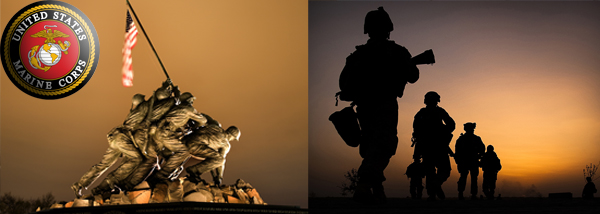
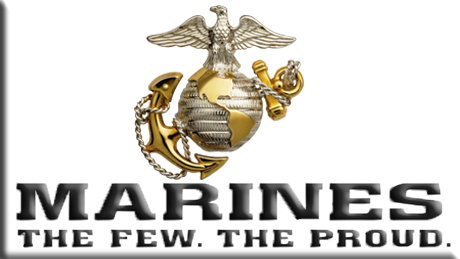
Just for you MARINE
Dead Horse: In the sailing navy, the period of time a sailor worked to pay off advance pay. (See: Beating a Dead Horse)
Deadline: The place where unserviceable vehicles awaiting repair are parked or a list of unserviceable vehicles. Also a nickname for the Marine whose job it was to inspect and, if necessary, deadline vehicles.
Deck: Floor, from the naval term.
Deck Ape: Anyone in the Deck Force on board ship (those sailors who chip paint, swab decks, mend canvas and create ornamental rope work). Generally a Boatswain's Mate or Boatswain's Mate striker.
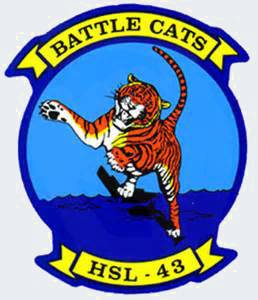
Naval Aviation Squadron Nicknames
HSL-43 - Helicopter Anti-Submarine Squadron Light 43: “Battle Cats”
NAS North Island, California

The Strange, Mysterious or Downright Weird
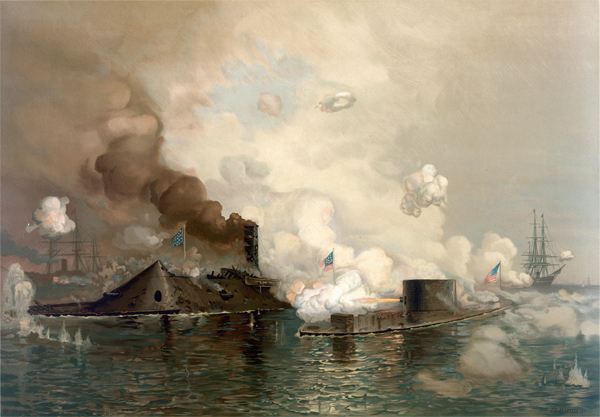
● South Carolina seceded from the Union on December 20, 1860 with threats of secession dating back for many years, however, South Carolina was not the first state to threaten secession. Pennsylvania had threatened secession during talks over the Whiskey Rebellion of 1794.
● During the attack on Harper’s Ferry by abolitionist John Brown, the first casualty was baggage master, Heywood Shepard, a freed slave. John Wilkes Booth would later attend the hanging of John Brown.
● John C. Calhoun (two-term Vice President, Secretary of State and South Carolina Senator) died in 1850. His stance on slavery, state’s rights and state sovereignty would fuel South Carolina’s secession in 1860.
● U.S. Census reports between 1830 and 1860 show approximately two percent of all slaves in the U.S. where owned by free blacks. The majority of which lived in South Carolina and Louisiana.
● “There are at present many Colored men in the Confederate Army….real soldiers, having muskets on their shoulders, and bullets in their pockets, ready to shoot down any loyal troops and do all that soldiers may do to destroy the Federal government …” ˜ Fredrick Douglas
● he actual number of black Confederates who wore the uniform with state buttons and saw battlefield action was approximately 65,000. According to all available records, black troops saw battlefield combat from 1st Bull Run (Manassas) to the end of the war. The most decorated and highest ranking of black Confederate troops was 3rd Sergeant James Washington, Company D 35th Texas Cavalry.
Strange History / History.com / Civil War.org

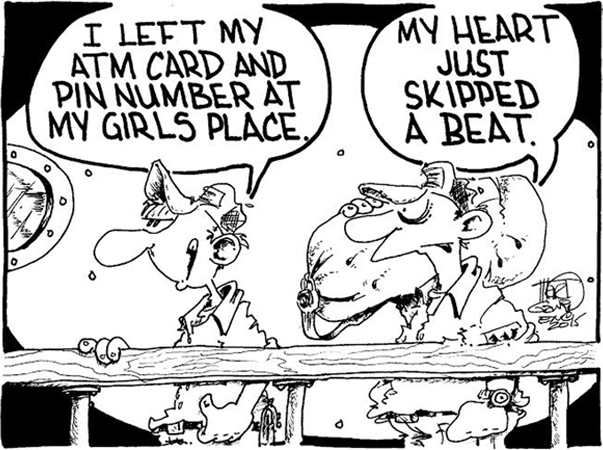

SONG FACTS

“Fortunate Son” - Creedence Clearwater Revival
Album: Willy and the Poor Boys
Released 1970 
This is an antiestablishment song of defiance and blue-collar pride, both anti-Washington and against the Vietnam War. John Fogerty and Doug Clifford were both drafted in 1966 and discharged from the army in 1967. “The song speaks more to the unfairness of class than war itself”, Fogerty said. “It's the old saying about rich men making war and poor men having to fight them.”
This is one of three political songs on the Willy And The Poorboys album. The others were “It Came From the Sky”  and “Don't Look Now (It Ain't You or Me)”
and “Don't Look Now (It Ain't You or Me)”  .
.
Richard Nixon was president of the U.S. when group leader John Fogerty wrote this song. Fogerty was not a fan of Nixon and felt that people close to the president were receiving preferential treatment.
This spoke out against the war in Vietnam, but was supportive of the soldiers fighting there. Like many CCR fans, most of the soldiers came from the working class, and were there because they didn't have connections who could get them out. The song is sung from the perspective of one of these men, who ends up fighting because he is not a “Senator's son”  .
.
Fogerty recorded a bunch of vocal takes for “Down On The Corner”  before singing this. As a result, his voice was strained, which he thinks is apparent on the song.
before singing this. As a result, his voice was strained, which he thinks is apparent on the song.
This is one of those songs that came together very quickly. Fogerty recalled to American Songwriter magazine in January 2013: “When I felt it was about ready to hatch, I went into my bedroom and just sat down to write. The whole thing happened in about 20 minutes. That just poured out.”
Like Bruce Springsteen's “Born In The U.S.A.”  , this is often misinterpreted as a patriotic anthem, when it is the opposite.
, this is often misinterpreted as a patriotic anthem, when it is the opposite.
Fogerty does not own the publishing rights to this song. He lost them, along with all the other songs he wrote for CCR, in his contract with Fantasy Records, which the band signed when they were struggling. Fantasy's boss at the time, Saul Zaentz, controls the rights and can use the songs any way he wants, as long as it isn't performed by any member of CCR. Fogerty hates that his song is constantly misused, but has no choice. He expressed this frustration on his solo track “Vanz Kant Danz”  .
.
When interviewed by Rolling Stone magazine, John Fogerty was once asked: “What inspired 'Fortunate Son'?” His response: “Julie Nixon was hanging around with David Eisenhower, and you just had the feeling that none of these people were going to be involved with the war. In 1969, the majority of the country thought morale was great among the troops, and like eighty percent of them were in favor of the war. But to some of us who were watching closely, we just knew we were headed for trouble.”
This is one of the first protest songs that makes the point that it's the poor who are most likely to fight the wars. During the Iraq war, System Of A Down covered this topic with their song “B.Y.O.B.”  .
.
Rolling Stone magazine (500 Greatest Songs of All Time - 99) / Facebook/CCR / Rock & Roll Hall of Fame (Rock & Creedence Clearwater Revival) / Song Facts / Wikipedia / Billboard
Image: “Fortunate Son” by Creedence Clearwater Revival

Trivia
● Almonds are a member of the peach family.
● An ostrich's eye is bigger than its brain.
● Babies are born without kneecaps. They don't appear until the child reaches 2 to 6 years of age.
Military Trivia
● In World War II American army slang, what was a GI Moe?
A: An army mule.
● Which of the U.S. service academies was the first to admit women?
A: The Coast Guard Academy, in July 1976.
● How many times did the nuclear submarine USS Triton surface during its historic 1960 underwater circumnavigation of the globe?
A: Twice - once to remove a sick crew member, and once to pay tribute to Ferdinand Magellan on the island of Mactan in the Philippines, where the explorer was killed in 1521 during his circumnavigation of the globe.

A Test for People Who Know Everything
Who all signed the Declaration of Independence on July 4, 1776?
● Answer for People Who Do Not Know Everything, or Want to Verify Their AnswerWikipedia / Constitution Facts
Answer to Last Week's Test
Who invented the toothbrush and when was it?
Answer: William Addis. In 1770 Mr. Addis was incarcerated in a cell of England's Newgate Prison for provoking a riot. Addis had little to do but eat, sleep, think. He thought a good deal about some new means of making a living once his sentence was served.
One morning, after washing his face, he began to clean his teeth. He cleaned his teeth as most people did in his time - he rubbed a rag against them. Going back to ancient times, this had been the accepted practice. Aristotle had advised Alexander the Great to use a rag on his teeth.
George Washington's dentist had suggested a rag with some chalk on it. Now, using the same method, the imprisoned Addis considered it ineffective. By the following day, he had an idea. He saved a small bone from the meat he'd been served. He bored tiny holes in the bone, then acquired some hard bristles through his prison guard, cut them down, tied them into tufts, put glue on the ends, and wedged them into the holes in the bone. Civilization had its 1st toothbrush.
When he was released from prison, Addis went into the toothbrush-manufacturing business. His success was instantaneous.

Joke of the Day
UNDERSTANDING WOMEN (A MAN'S PERSPECTIVE)
I know I'm not going to understand women. I'll never understand how you can take boiling hot wax, pour it onto your upper thigh, rip the hair out by the root, and still be afraid of a spider.


























